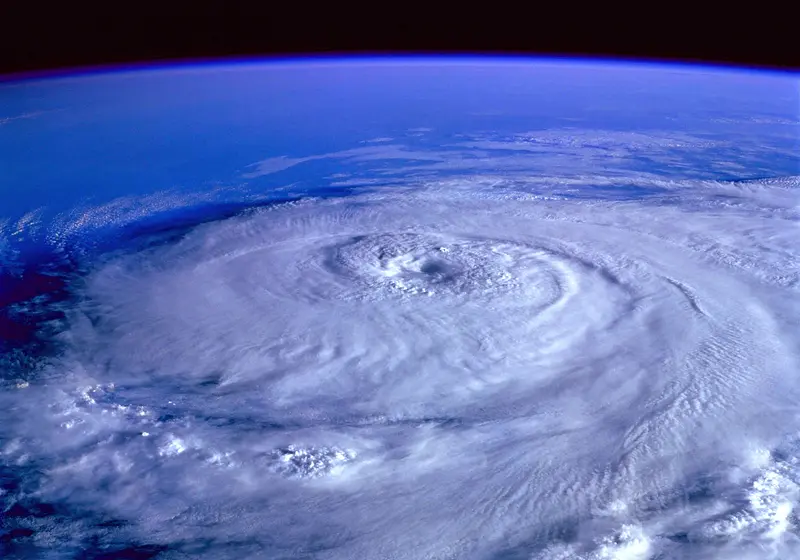Entire villages were wiped off the map. A hundred men, women, and children missing or dead. Millions of people are unprepared against 165 mph winds.
Entire tennis stadiums and high-rises collapsed. Apocalypse in Acapulco.
Hurricane Otis made landfall a few weeks ago on October 25th. It was the strongest hurricane to ever strike southern Mexico and is forecasted to become one of the costliest natural disasters in Mexico.
However, Otis was initially forecasted to be a tropical storm, but wind speeds jumped by 115 mph in a single day which was the "second fastest intensification recorded in modern times,” the National Hurricane Center released in a statement. In other words, people had less than 12 hours to prepare for 165 mph winds, life-threatening storm surges, landslides, and mudslides
Otis's wrath left behind a graveyard of villages, buildings, and entire condos. According to a news release, power plants, electrical substations, and transmission lines were significantly damaged; over 10,000 utility poles were destroyed, knocking out power and blacking out the region for weeks.
Beyond the human effects, Otis leveled nearby forests. The high winds blew leaves off trees, and the large amounts of rain liquefied the soil, and this caused trees to collapse. This isn’t the first time something like this happened. After Hurricane Maria, numerous studies were conducted on the nearby forests. The researchers found a “quarter of forest biomass was lost in the storm.”
The annihilated environment made rescue operations harder. Mudslides in mountainous terrain impeded rescuers and troops. Most troops lacked the tools necessary for clearing mud and debris. They also lacked a safe space to land since Acapulco’s airports were severely damaged. Acapulco was cut off for over a week due to these hindrances. Once rescue teams finally made it, the scene was unrelentingly horrendous.
“Bodies were yet to be found. We discovered a massacre.” - Giorgio Franyuti
Dr. Franyuti is the founder of Medical Impact, a medical aid organization that helps communities after disasters.
“The secondary disaster is bigger than the first one. The earthquake or hurricane doesn't kill as many people as the water shortages.”
He’s right. Thousands of families in southern Mexico have been without food and water for the last couple of weeks. More than 90% of buildings in the area were damaged and had power cut at some point.
According to a humanitarian organization for children, Save the Children, “Children have lost everything, including their homes, their schools, and their toys, fleeing with just the clothes they were wearing.” The government announced that unscathed institutions will resume instruction on November 13th. However, most schools don’t have a roof anymore. Most schools are submerged in murky floodwaters and mudslides.
IN MEMORIAM
According to an Associated Press report, “sailor Ruben Torres recorded a 10-second audio message from a yacht called the Sereno.”
Sailors like Torres believe that the death toll is much higher. For instance, a fisherman, Kristian Vera, felt fortunate despite losing her livelihood and home. Riding out the storm alive is a blessing in itself.
Unfortunately, many sailors and fishermen left in the hours before Otis’s landfall. Current rescue operations try to rescue them, but the chances are low. At this point, all we can do is hope.
Climate Change
The main concern is whether intense hurricanes like Otis will become more common.
According to an article published by Columbia University, models predict that rapid intensification events will become more frequent with greenhouse emissions caused by human activity.” Recent studies noticed higher intensification rates in hurricanes, and the explanation is found in global warming. As global temperatures rise, ocean temperatures will increase as well.
Hurricanes obtain energy by sucking up heat energy from ocean waters. This creates moisture in the air, and a hurricane is formed if factors like wind conditions are right. The hurricane can strengthen rapidly with higher heat energy in the water.
This is dangerous because as hurricanes landfall, they lose energy rapidly. However, losing energy would take longer if the hurricane is a Category 5, increasing the deadly effects.
How You Can Help
First and foremost, spread awareness.
I asked my family members and friends if they heard of this, and they hadn’t. A general trend in the media underrepresents non-US countries, especially in a humanitarian crisis. Share this article, tell your friends about the disaster, and repost images on your Instagram or Snapchat stories!
Unfortunately, the death toll will undoubtedly rise, but by spreading awareness, you can put pressure on rescue teams and local governments. Send letters to the US embassy in Mexico! This will also place pressure on our government.
Secondly, donate to funds. In times of disaster, there’s a lot of strain on the government and economy. It’s our duty as humans to help support those in need.
There are tons of funds you can donate to. For instance, the Direct Relief Fund donated over $200,000 in medical equipment, food, water, and economic aid. You can contribute to the Red Cross and the Crisis Relief Fund. Other organizations like UNICEF, the UN, and the WHO are sent medical aid and assistance as well.
Conclusion
Unfortunately, disasters like Hurricane Otis are inevitable, but we can do our best to support victims. As the staggering death toll rises, you can persuade rescue teams and governments to try harder. Dr. Franyuti said that “the aftermath kills more than the disaster.” Let’s make sure that doesn’t happen this time by spreading the word and donating aid and supplies. The Teen Magazine sends its prayers to the people of Acapulco in the wake of this apocalypse. Acapulco will build back stronger!








.jpg)




